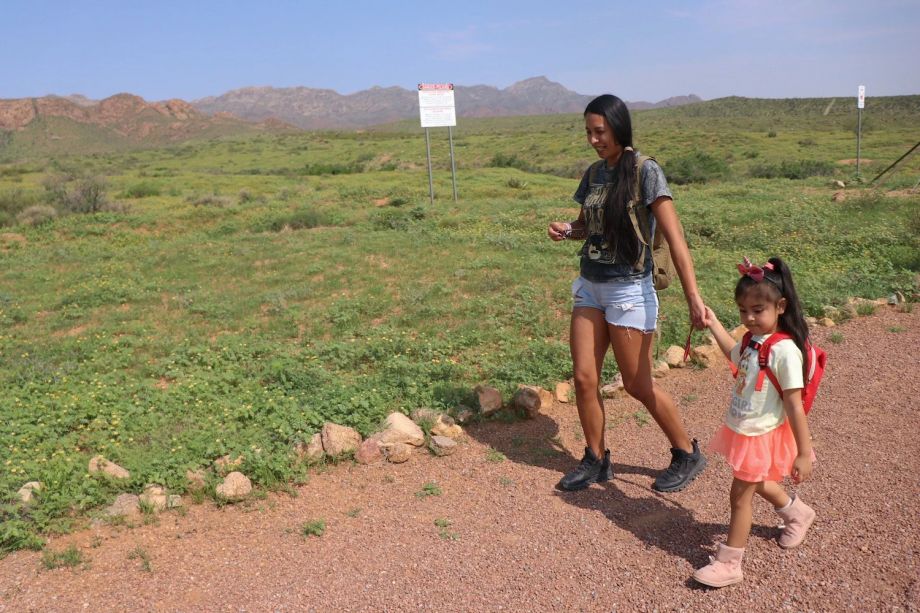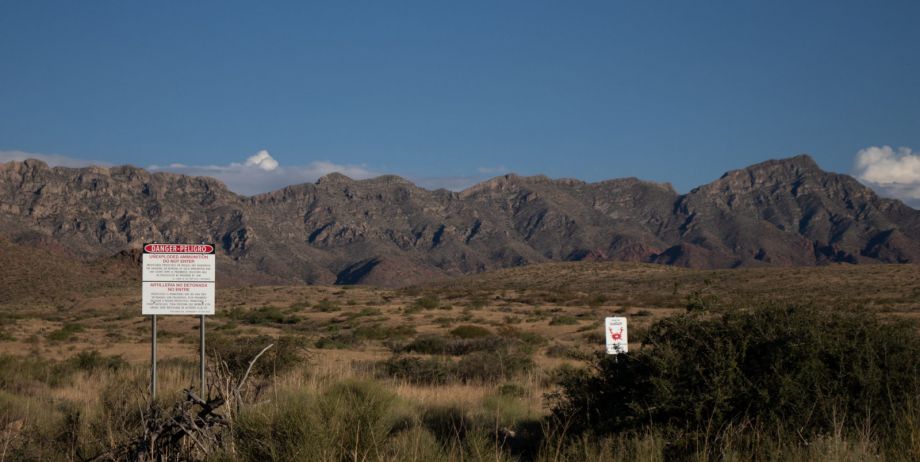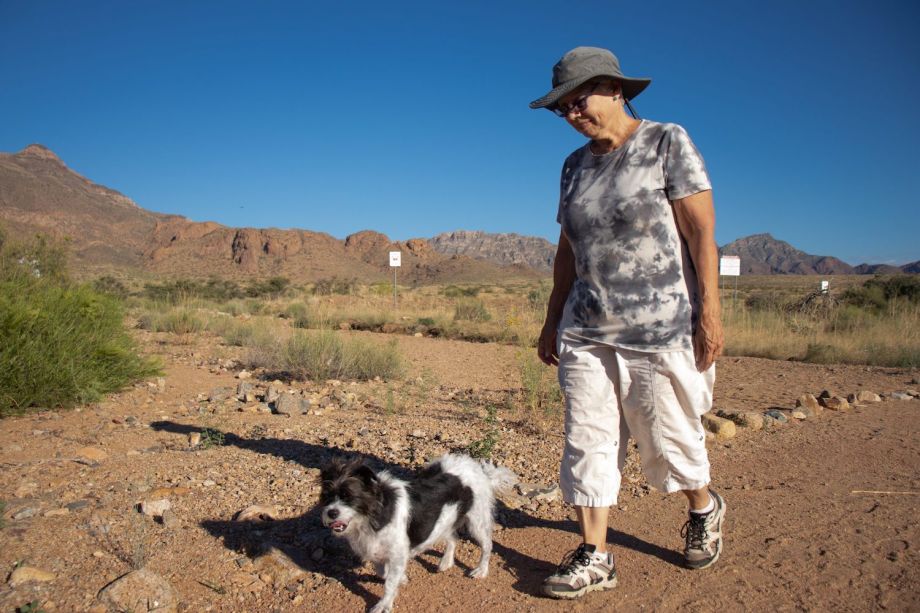Are You A Vanguard? Applications Now Open
Mark Clune
This is your first of three free stories this month. Become a free or sustaining member to read unlimited articles, webinars and ebooks.
Become A MemberThis story was co-published with El Paso Matters as part of our joint Equitable Cities Reporting Fellowship For Borderland Narratives.
Every year, as the winter chill leaves the borderland city of El Paso and spring makes its way in, the foothills of the Franklin Mountains glow bright yellow with the full bloom of the city’s iconic golden poppies.
Amid this brilliant natural beauty, a hidden danger from the past lurks in these rugged mountain slopes: the remnants of explosive artillery lay concealed beneath the blossoms, a reminder of the days when the Castner Range served as a military training ground during the 1920s under Fort Bliss.
Frontera Land Alliance, a nonprofit land conservation organization founded in 2004, has fought for decades to reclaim Castner Range, continuing a 52-year effort in the region. This spring, they succeeded in winning federal protections for the land, making the site – which is entirely within El Paso’s city limits – into a National Monument.
Frontera Land Alliance’s work started with volunteers: citizens concerned about the preservation and conservation of open natural lands in the Chihuahuan Desert, a 250,000-square-mile area that spans five counties in two states.
“We needed to protect the land just so it could stay open for the water recharge,” says Janae’ Reneaud Field, executive director of the nonprofit. Water recharge occurs when water seeps into the ground to replenish underground aquifers, which supply the city’s drinking water. The Castner Range designation will help safeguard local water infrastructure amid rising temperatures, as well as protect the area’s Indigenous artifacts (some of which date back to the year 6,000 B.C.) and dozens of rare, threatened, and endangered species.
“There’s great historical and architectural archaeology components to this space.”

Tanya Alvarado walks with her 4-year-old daughter Lana at the public portion of Castner Range. Much of the area was used by Fort Bliss as a former live artillery range, meaning that old munitions still pose a threat. (Photo by Danielle Prokop / El Paso Matters)
In 2011, Reneaud became the alliance’s first paid employee, albeit part-time. The Michigan native, who was involved in land preservation back home, moved to El Paso when her husband’s work landed them in the area.
Her love for the open spaces in her new home pushed Reneaud to the front lines of the fight to preserve Castner Range, the 6,600-acre area at the base of the Franklin Mountains. The site is also considered prime development real estate, making the call to preserve it for public use and to protect the natural habitat an urgent one.
Frontera Land Alliance spearheaded the effort to obtain the designation with the help of the El Paso Community Foundation, Nuestra Tierra Conservation Project, Pastor Moses Borjas, and the Franklin Mountain Wilderness Coalition, among other groups in the region.
“During that phase, it was all hands on deck … because we were asking President Biden to use his authority through the Antiquities Act of 1906,” says Renaud. The group focused on outreach and awareness for the public, including attending events and collecting signatures, for many years. “And then the last couple of years, it shifted to more of educating the decision-makers in Washington, D.C., educating some of the national partners to understand why we needed their financial support.”
During the 52 years it took for Castner Range to become a national monument, land preservation activists spoke directly with multiple presidents and members of Congress. In 2022, Secretary of the Interior Deeb Haaland – the first Native American to serve as a cabinet secretary – made a site visit to approve the designation, all backed by continuous public support.
Then in March, the White House issued a proclamation making the site a National Monument. The area remains closed to the public due to dangerous materials present at the range from when it was used as a firing range starting in the 1920s and through WWII, Vietnam War, and the Korean War.
“We stayed active through the whole effort,” Renaud says. “The administration’s focus changed under every president. We understood, after that, that there was a checklist of generalities that you needed to do to make a project of this size move forward at the national level.”
“It will be interesting as we move forward how much access is given for research and study to know where certain trails may be placed in priority preservation or education areas or areas that should just be left untouched,” says Reneaud.

Signs warn of unexploded ordinance on Castner Range on the eastern slopes of the Franklin Mountains. The U.S. Army used the area as a live ammunition firing range for anti-tank guns for decades. (Photo by Danielle Prokop / El Paso Matters)
The U.S. Army will manage the site, making it the first national monument that the entity has operated in more than 90 years. That’s meant to “better enable the service to execute its environmental cleanup responsibilities and leverage its strong, preexisting relationships with the El Paso community,” reads a statement from the Department of Defense’s Environment, Safety & Occupational Health Network and Information Exchange (DENIX).
The designation will help honor veterans, preserve the area for Indigenous people and provide opportunities for the local community to enjoy the area’s natural beauty, DENIX says.
The park may take up to five years to open to the public due to safety concerns about unexploded ordnances in the area. “They got to make sure it’s safe,” says Renaud. “They got to make sure that people stay on the trails that are designated.”
For Renaud, keeping the public informed by presenting at events, engaging with the press and being active on social media helped their efforts come to fruition. But after achieving a national monument in El Paso, the work to make it available for public use will continue. The organization hopes to become involved with the federal government to plan the future of Castner Range.
“We would like to be that conduit, that voice from the community to share with the Army throughout the planning,” says Renaud. “From there, we will keep working and sharing the community’s interest in needs for access to the caster range in various ways.”
Through such a potential collaboration, they hope to make the site accessible for people with disabilities.
“There’s an opportunity where there could be access trails,” she says. “It would be great to have sensory trails if you’re visually or hearing impaired. There are just different ways on lots of opportunities.”

Cheryl Gropp walks with her dog Alfie daily at the small loop of trails open at Castner Range. (Photo by Danielle Prokop / El Paso Matters)
Castner Range is one of many projects Frontera has worked on. The nonprofit aims to educate students to engage and become stewards of desert lands through their education programs at libraries, talks, or educational hikes.
“We have lots of different components that over time we’ve evolved into, that all relate back to the preservation of land and how to care for that land,” says Renaud. “If you don’t have the land, you don’t have water recharge. You don’t have a bird habitat. You don’t have the insects that pollinate. The land is the foundation for everything else.”
The organization will also continue its focus on conserving other easement projects — more than 8,000 acres of land — and continue to educate the people of El Paso about the natural resources available for public use.
The sites available for public use are also used to study climate change effects in the region by partnering up with the University of Texas at El Paso.
“We have two climate stage equipment collecting data on the temperature, water, particles, and different components,” Renaud says. “It will be interesting to see, once we have enough data collected, what trends we’re noticing as climate change happens. We’ll watch and see as insects and seeds, birds and mammals may adjust in elevation depending on what the climate is.”

Christian De Jesus Betancourt is Next City and El Paso Matters' joint Equitable Cities Reporting Fellow for Borderland Narratives. He has been a local news reporter since 2012, having worked at the Temple Daily Telegram, Duncan Banner, Lovington Leader and Hobbs News-Sun. He's also worked as a freelance reporter, photographer, restaurant owner and chef. Born and raised in Juarez, El Paso became Betancourt’s home when he moved there in the seventh grade.

20th Anniversary Solutions of the Year magazine